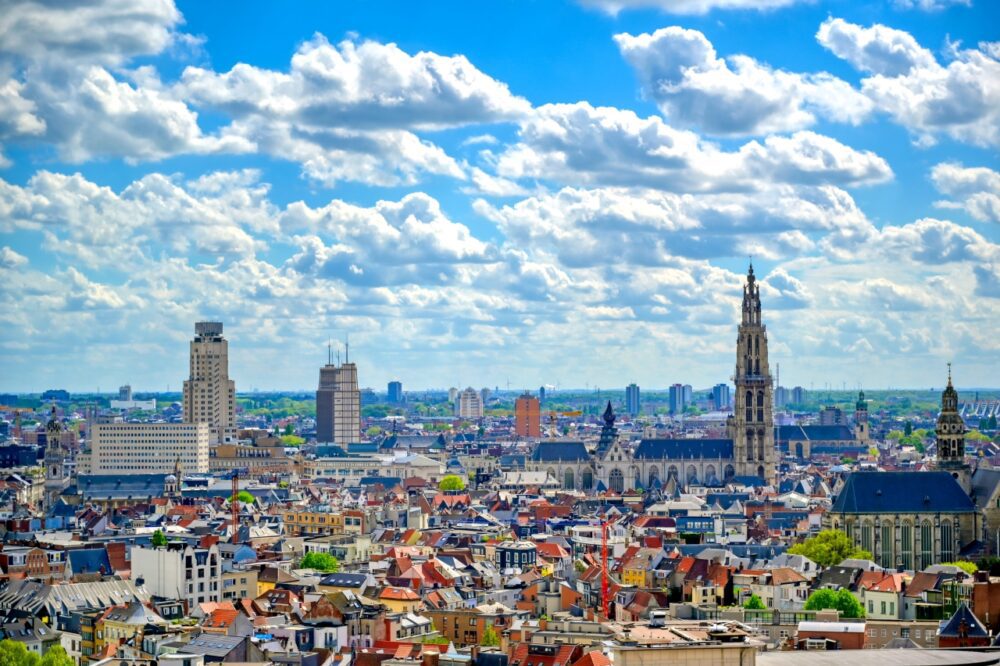
Is Antwerp worth visiting? In my opinion, it’s a hidden treasure waiting to be discovered. When I first explored Antwerp, I was struck by its mix of old-world charm and edgy creativity. From the intricate beauty of the Cathedral of Our Lady to the ultra-modern Port House, this Belgian city feels like a vibrant meeting point of the past and future. And let’s not forget the diamonds—Antwerp sparkles in more ways than one.
As Belgium’s second-largest city, Antwerp is renowned for its fashion scene, artistic heritage, and thriving port. It’s the birthplace of the legendary painter Peter Paul Rubens and home to a bustling market culture that keeps the city alive with energy. Whether you’re wandering through the historic Grote Markt, indulging in world-class chocolate, or admiring the art in the Rubenshuis, Antwerp offers an experience that’s as diverse as it is delightful. But is Antwerp worth visiting for you?
In this blog post, we’ll uncover the top 10 reasons why Antwerp should be on your travel list. From its rich history to its buzzing nightlife and shopping hotspots, we’ll show you why this city stands out. Plus, we’ll share travel tips to make your visit unforgettable. Keep reading, and you’ll see why Antwerp deserves a spot on your European itinerary.
Table of Contents
Pros – Reasons You Should Visit Antwerp
1. A Stunning Mix of Historic and Modern Architecture
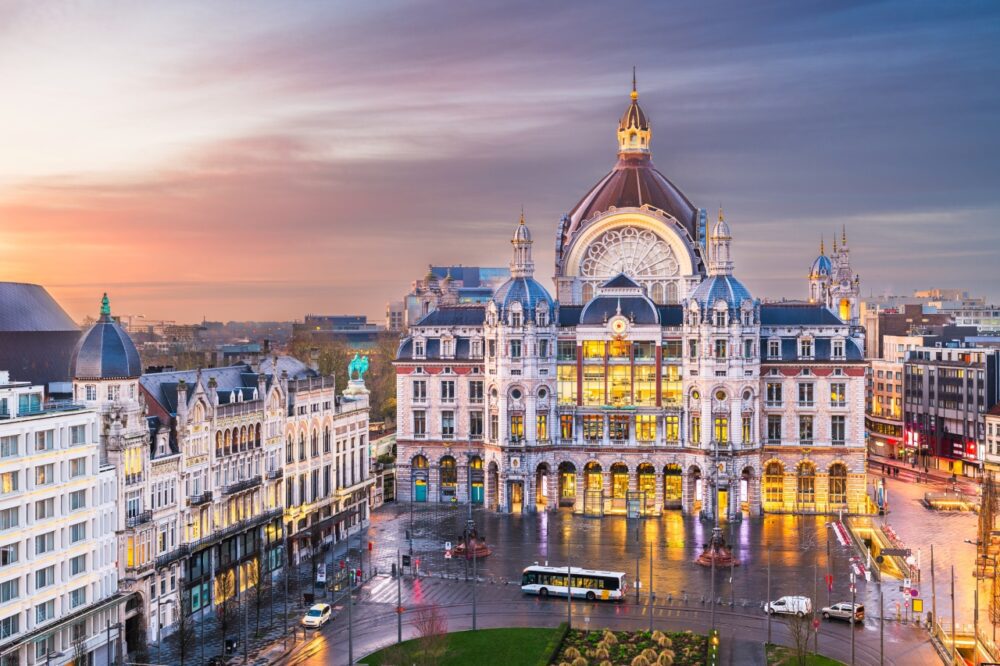
Antwerp is a city where medieval charm meets bold modern design, creating an eclectic mix of architectural styles that make it one of Belgium’s most visually interesting destinations. From Gothic cathedrals and 16th-century guild houses to striking contemporary buildings, there’s something to admire on nearly every street.
The first thing that caught my eye was Antwerp Central Station, a masterpiece of railway architecture that looks more like a grand palace than a transport hub. Walking through the city, I was equally impressed by the Cathedral of Our Lady, with its towering spire dominating the skyline, and the modern Port House, designed by Zaha Hadid, which blends futuristic glasswork with an old fire station. Whether you love history or modern design, Antwerp’s architecture never fails to impress.
2. One of the Best Shopping Cities in Europe
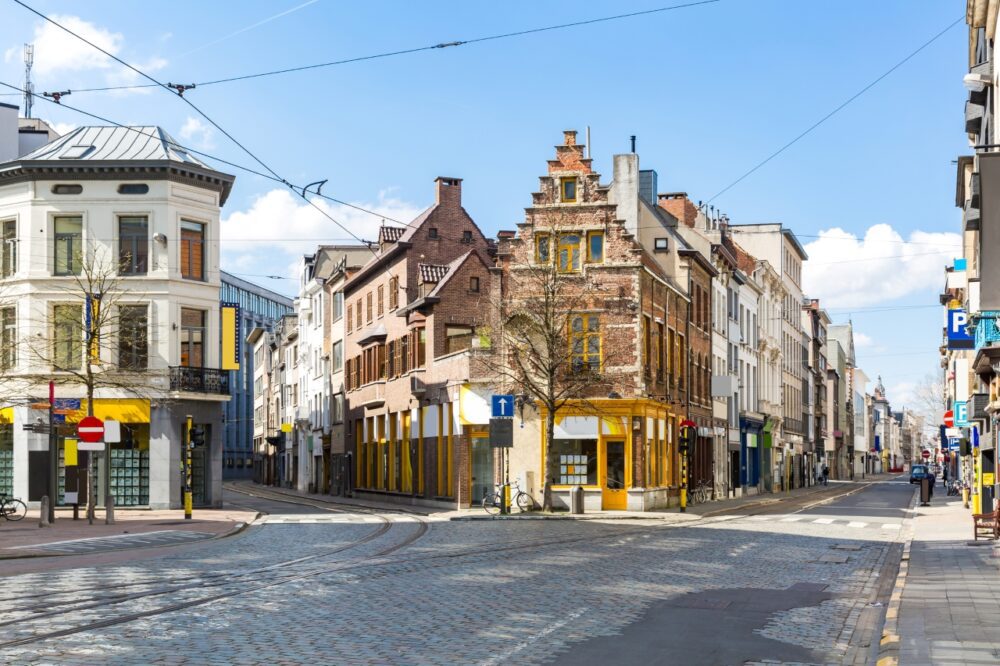
Antwerp is Belgium’s fashion capital and one of the best places in Europe for shopping. It’s home to the famous Antwerp Six, a group of avant-garde designers who put the city on the global fashion map, and the streets are lined with stylish boutiques, high-end brands, and unique concept stores.
I wandered down Meir, the city’s main shopping street, which had everything from international retailers to Belgian designer stores. Then I explored the fashion district around Nationalestraat, where independent boutiques and cutting-edge designs showcased Antwerp’s creative energy. Whether you’re looking for luxury fashion or vintage finds, shopping in Antwerp is an experience in itself.
3. The Cathedral of Our Lady is a Gothic Masterpiece
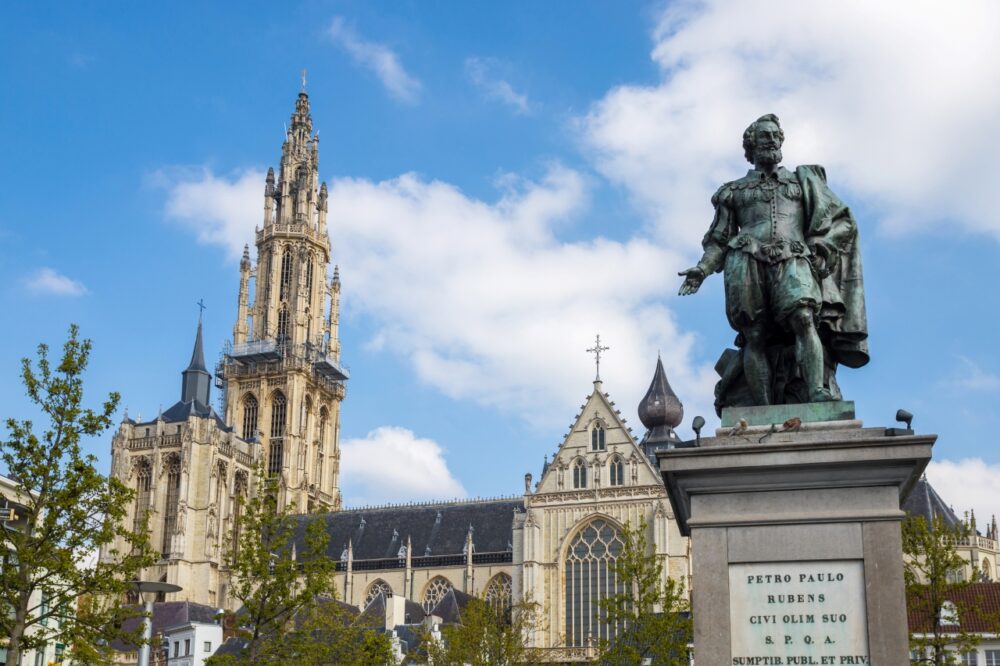
Antwerp’s most iconic landmark, the Cathedral of Our Lady, is a breathtaking example of Gothic architecture and one of the most impressive churches in Belgium. The cathedral’s 123-metre spire dominates the city’s skyline and is recognised as a UNESCO World Heritage Site.
Inside, I was amazed by the sheer scale of the vaulted ceilings and the stunning stained-glass windows. Even more impressive were the paintings by Peter Paul Rubens, Antwerp’s most famous artist, which hang inside the cathedral. The combination of art, history, and architecture makes this a must-visit for anyone exploring the city.
4. The City is Home to the Legendary Antwerp Diamonds
Antwerp has been the world’s diamond capital for centuries, with around 80% of the world’s rough diamonds passing through the city. The Diamond District, located near the central station, is a fascinating place to explore, with hundreds of diamond traders, jewellers, and workshops.
I visited the DIVA Museum, which offers a fascinating look into Antwerp’s history with diamonds, gold, and jewellery craftsmanship. Even if you’re not planning to buy, walking through the Diamond District and seeing some of the world’s most exquisite gems up close is an unforgettable experience.
5. A City Rich in Art and Home to Peter Paul Rubens
Antwerp has a deep artistic heritage, with its most famous resident being the Baroque painter Peter Paul Rubens. His influence is everywhere, from the stunning paintings inside the Cathedral of Our Lady to the elegant Rubenshuis, his former home and workshop.
I spent an afternoon exploring Rubenshuis, where I saw his original paintings, lavishly decorated rooms, and beautifully preserved 17th-century architecture. The Museum of Fine Arts, which houses an incredible collection of Flemish masterpieces, is another must-visit for art lovers. Antwerp’s connection to Rubens and its thriving art scene make it a dream destination for culture enthusiasts.
6. The Antwerp Zoo is One of the Oldest and Most Beautiful in Europe
Located next to Antwerp Central Station, the Antwerp Zoo is one of the oldest zoos in Europe, dating back to 1843. It is beautifully landscaped, with historic buildings, lush gardens, and a diverse range of animal species.
I was particularly impressed by the zoo’s commitment to conservation and the spacious enclosures that provided a more natural habitat for the animals. The Art Deco aquarium was another highlight, offering a glimpse into the rich marine life of different ecosystems. Whether you’re visiting with family or just love animals, the Antwerp Zoo is a peaceful and enjoyable escape from the busy city.
7. A Thriving Café and Beer Culture
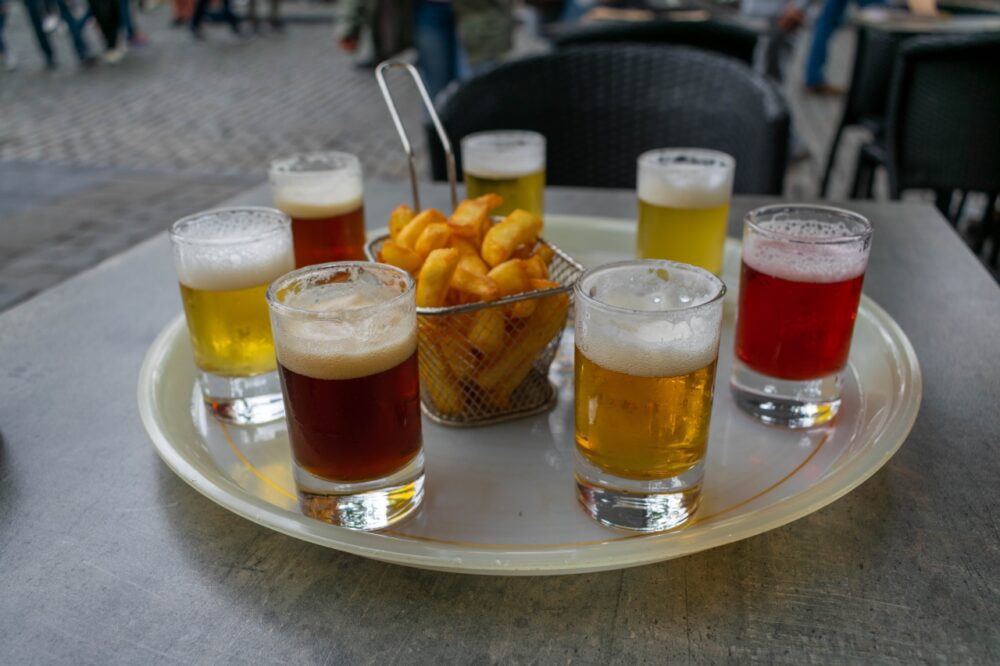
Belgium is famous for its beer, and Antwerp has no shortage of great cafés and bars where you can sample some of the country’s finest brews. From historic brown cafés to trendy beer bars, the city offers a fantastic drinking culture with a mix of tradition and innovation.
I stopped at Café Kulminator, one of Antwerp’s most legendary beer bars, which has an impressive collection of rare and aged Belgian beers. Later, I visited De Koninck Brewery, where I learned about the city’s brewing history and enjoyed a fresh Bolleke, Antwerp’s signature amber beer. Whether you prefer classic Trappist ales or experimental craft brews, Antwerp is a fantastic place to experience Belgian beer culture.
8. The MAS Museum Offers Incredible Views and Fascinating Exhibits
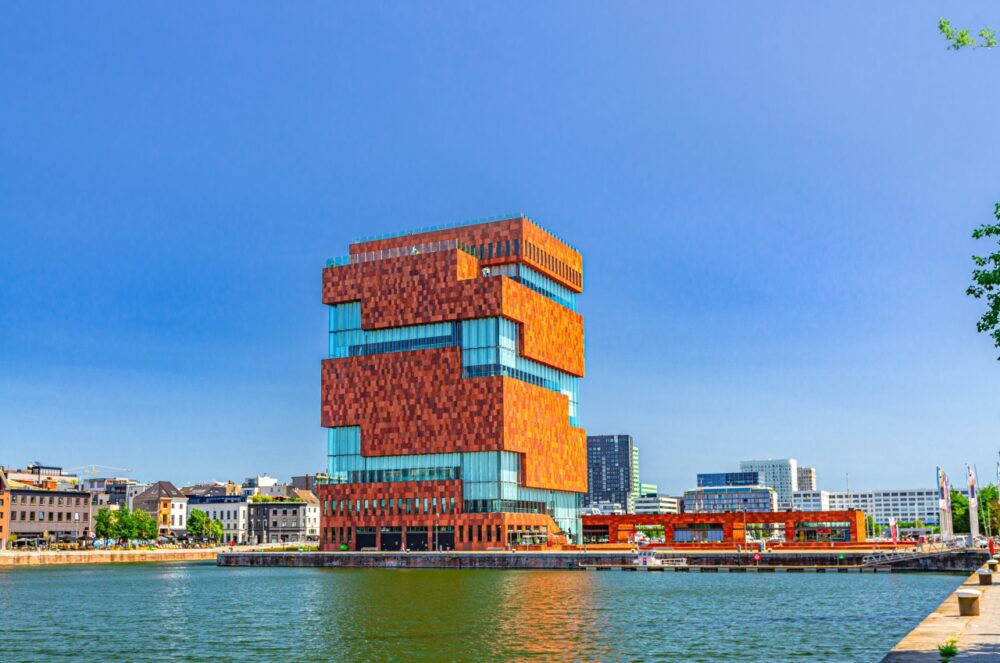
The Museum aan de Stroom (MAS) is one of Antwerp’s most striking modern buildings, with its bold red sandstone design and panoramic views over the city. The museum explores Antwerp’s maritime history, trade connections, and global influences through a series of fascinating exhibitions.
I took the escalator up to the rooftop terrace, and the view over the Scheldt River and the city skyline was absolutely breathtaking. Inside, the exhibits were engaging and well-curated, covering everything from Antwerp’s colonial history to contemporary urban development. Even if you’re not a big museum person, MAS is worth visiting for the views alone.
9. The Food Scene is Fantastic, Especially for Seafood Lovers
Antwerp is a great place to indulge in Belgian cuisine, with a particular focus on fresh seafood. The city’s proximity to the North Sea means that dishes like moules-frites (mussels and fries), shrimp croquettes, and fresh oysters are incredibly popular.
I had an amazing plate of moules-frites at a restaurant near the river, with perfectly cooked mussels in a white wine sauce and crispy golden fries on the side. The city is also known for its delicious waffles, chocolates, and Belgian fries, making it a great place for food lovers to explore.
10. The Scheldt Riverfront is Perfect for Scenic Walks and Cycling
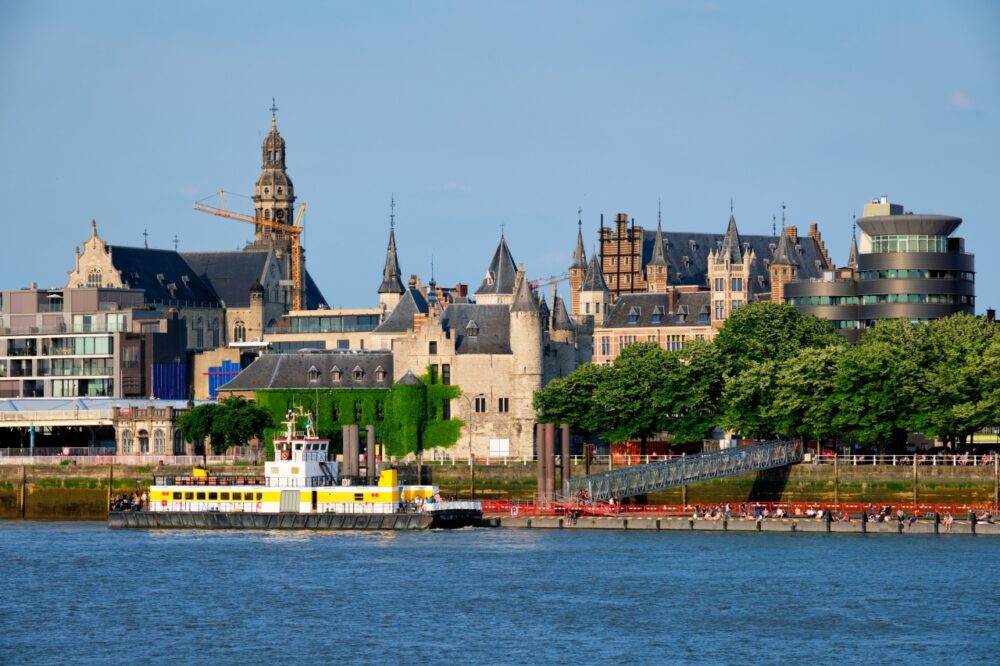
Antwerp’s location along the Scheldt River gives it a beautiful waterfront area that’s perfect for walking, cycling, or just relaxing by the water. The city has invested in revitalising its riverfront, with pedestrian-friendly promenades, modern architecture, and scenic viewpoints.
I took a leisurely bike ride along the river, stopping at the impressive Port House and enjoying the fresh air and open space. The riverfront area also has plenty of cafés and bars where you can sit and watch the boats go by. Whether you enjoy active sightseeing or just want a quiet place to unwind, Antwerp’s riverfront is a lovely place to spend time.
Cons – Things You Should Consider When Visiting Antwerp
1. Traffic Congestion and Limited Parking Can Be a Hassle
Antwerp is one of Belgium’s busiest cities, and traffic congestion is a major issue, particularly during peak hours. The city’s road network is often clogged with cars, and finding parking in the centre can be both difficult and expensive. The introduction of a low-emission zone (LEZ) also means that older vehicles are restricted from entering certain parts of the city, which can be confusing for visitors driving in from other countries.
I made the mistake of trying to drive into the city centre during rush hour, and it took far longer than expected. When I finally arrived, parking was limited, and the rates were quite steep. While public transport is a better option for getting around, the trams and buses can also get crowded, especially in busy areas. If you’re visiting Antwerp, it’s best to park outside the city and use public transport or explore on foot to avoid the frustration of traffic.
2. Some Areas Feel a Bit Industrial and Less Attractive
While Antwerp has beautiful historic districts like the Old Town and the fashion quarter, some parts of the city feel more industrial and less appealing for sightseeing. The port, which is one of the largest in Europe, dominates much of the northern area, and while it’s impressive in terms of scale, it lacks the charm of other Belgian cities like Bruges or Ghent.
I wandered a bit beyond the main tourist areas and found some neighbourhoods that felt a little neglected, with modern buildings and a more functional, business-like feel. The contrast between the picturesque parts of Antwerp and the more industrial areas is quite noticeable, so if you’re expecting a city that’s uniformly charming, you might be slightly disappointed.
3. The Weather Can Be Grey and Unpredictable
Like much of Belgium, Antwerp experiences unpredictable weather, with frequent rain and cloudy skies throughout the year. While summer can be warm and pleasant, spring and autumn often bring sudden showers, and winters can feel damp and grey rather than snowy and festive.
I visited in early October and had to deal with a mix of rain, wind, and brief sunny spells all in one afternoon. Even in summer, it’s a good idea to carry an umbrella and be prepared for changing conditions. If you’re looking for a destination with consistently warm and sunny weather, Antwerp might not be the best choice.
4. The Cost of Accommodation and Dining is Higher Than Other Belgian Cities
Antwerp is a major commercial and cultural hub, which means that accommodation and dining prices are noticeably higher than in smaller Belgian cities like Ghent or Leuven. While it’s still more affordable than Paris or London, staying in the city centre can be expensive, especially if you’re looking for boutique hotels or high-end restaurants.
I stayed in a mid-range hotel near the Cathedral of Our Lady, and while it was comfortable, it was priced significantly higher than similar hotels in Ghent. Dining out in the popular areas also added up quickly, especially in the more touristy spots near Meir or the riverfront. If you’re on a budget, it’s worth looking for accommodation slightly outside the centre and exploring local cafés and markets rather than dining in high-end restaurants.
5. Some Tourist Attractions Close Early or Have Limited Opening Hours
One frustrating thing about Antwerp is that many attractions and shops close earlier than expected, particularly outside the summer months. Museums, galleries, and even some restaurants shut their doors relatively early compared to other major European cities, which can be inconvenient for visitors who prefer sightseeing in the evening.
I planned to visit the Rubenshuis in the late afternoon, only to realise it was already closing for the day. Similarly, many shops were shut by 6 pm, and even some restaurants stopped serving food earlier than I had anticipated. If you’re used to the late-night culture of cities like Madrid or Rome, Antwerp’s quieter evenings might take some adjusting to. It’s always best to check opening hours in advance to avoid disappointment.
When to Visit Antwerp
Antwerp is a delight year-round, but the best times to visit are in spring (April to June) and early autumn (September to October). During these months, the weather is pleasant, and you can explore Antwerp’s cobbled streets, historic squares, and lively outdoor cafes without the summer crowds. Summer, from June to August, is bustling with events like the Bollekesfeest beer festival, but be prepared for higher prices and busier attractions. For a cosy, festive atmosphere, visit in December when Antwerp’s Christmas markets light up the city, and mulled wine and Belgian treats are in abundance.
How to Get to Antwerp
The nearest airport is Brussels Airport (BRU), about 45 kilometres from Antwerp, with flights from airlines such as Brussels Airlines, Lufthansa, and British Airways. From the airport, it’s an easy 30-minute train ride to Antwerp Central Station. Alternatively, Antwerp International Airport (ANR) offers limited European flights, particularly through TUI fly, but connections are more restricted. High-speed trains also connect Antwerp to major European cities, with Thalys offering direct services to and from Paris, Amsterdam, and Cologne. Antwerp’s excellent rail links make it a straightforward destination to reach by train.
Where to Stay in Antwerp
Antwerp has several distinct neighbourhoods with something for every taste and budget:
- Luxury: Old Town (Het Zuid) – Near the Cathedral of Our Lady and the Grote Markt, this area is ideal for historic charm. Top choices include Hotel Julien and the Hotel Rubens-Grote Markt, which blend modern comfort with classic style.
- Mid-range: Zuid (South Antwerp) – A trendy area filled with galleries, hip cafes, and museums like the Museum of Contemporary Art (M HKA). Hotel Pilar and Maison Emile offer boutique stays with a creative flair, just a short walk from the main attractions.
- Budget: Berchem – Known for its art nouveau buildings and affordable options, Berchem is a bit outside the centre but well connected by tram. Tulip Inn Antwerp and YUST Antwerp are popular choices for those seeking a budget-friendly, comfortable base.
Getting Around Antwerp
Antwerp’s compact city centre makes walking a pleasant way to explore, especially around the historic Old Town and its narrow streets. For longer journeys, the De Lijn network of buses and trams is reliable and budget-friendly, with single and day tickets available. Velo Antwerpen, the city’s bike-sharing programme, is an affordable and eco-friendly way to get around, with docking stations spread across the city. Antwerp is also an extremely bike-friendly city, with dedicated lanes on most main roads. For a scenic option, take a ferry across the Scheldt River for an alternative view of the city.
How Long to Spend in Antwerp
Two to three days is ideal to experience Antwerp’s key highlights, from the impressive Cathedral of Our Lady and Grote Markt to the MAS Museum and the famous Antwerp Zoo. With three days, you’ll have time to explore the city’s vibrant fashion district, sample Belgian beers, and perhaps take a side trip to Mechelen or Ghent. If you’re keen on Antwerp’s art and culture scene, add an extra day to delve deeper into the museums or the Rubenshuis—the former home and studio of the famous painter.
Conclusion
So, is Antwerp worth visiting? Absolutely! With its stunning architecture, artistic legacy, and cutting-edge fashion scene, Antwerp is a city that truly has it all. Whether you’re exploring its historical treasures or soaking up its modern vibes, there’s something here for everyone. While it’s less famous than cities like Brussels or Bruges, that means fewer crowds and a more authentic experience. If you’re ready to uncover one of Belgium’s best-kept secrets, start planning your trip to Antwerp—you’ll be glad you did!
